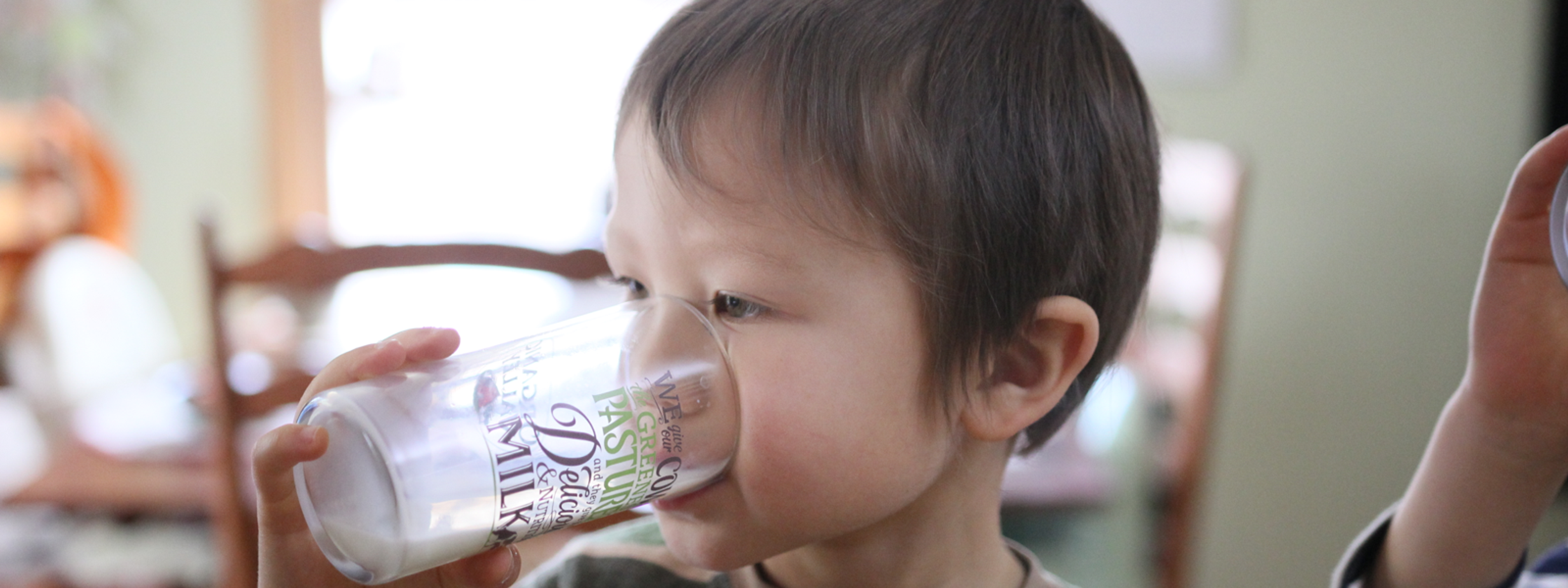
Food
Why Children Should Drink Milk, Water and Not Much Else
Earlier this month, a panel of scientists issued new nutritional guidelines that address the drinks young children consume. Their recommendations in a nutshell? Keep it simple.
While that’s a good rule-of-thumb under most circumstances, these guidelines are remarkable in that they’re among the most comprehensive yet, advising against any sweetened beverages like soda, chocolate milk, flavored milk, or plant-based non-dairy milks. The guidelines even suggest that parents drastically limit, or better yet omit, 100% fruit juice as well.
So what drinks do they recommend you serve your young ones in good conscience? And when should children get milk? The report says breast milk or formula for infants, followed by water and good old-fashioned cow’s milk as they get older. No need to get fancy, it really is that deliciously simple.
Here’s the Breakdown:
- Newborn to 6 months: Between birth and 6 months, babies can get the fluids and calories they need exclusively from breast milk or formula.
- 6 to 12 months: At this age, a baby’s nutritional needs can still be met through breast milk or formula alone. However, once solid foods are introduced, it’s a good idea to add a few sips of water during meal times, too.
- 12 to 24 months: 1 to 4 cups of water a day, and they can be introduced to plain, pasteurized whole milk. They’ll need less milk if they’re eating more solid food — 2 to 3 cups per day is recommended.
- 2 to 3 years: 1 to 4 cups of water per day and transition to drinking 2 cups of fat-free or low-fat milk instead of whole milk daily.
- 4 to 5 years: 1 ½ to 5 cups of water, and up to 2 ½ cups of fat-free or low-fat milk per day.
Starting at 12 months, these new guidelines for what young children should drink also allow up to a half cup (4 ounces) of 100% fruit juice per day, but the strong recommendation is that children meet their daily fruit intake with fresh, canned or frozen fruits instead. Although “100% fruit juice” sounds healthy, it contains a large amount of sugar — apple juice has 13.5 grams per half cup, equivalent to 3 ¼ teaspoons. That’s more sugar than in the same amount of many sodas. Sugary drinks can contribute to cavities, and in excess of a half cup per day, to other negative health impacts, like weight gain.
Additionally, all sweetened beverages such as soda, chocolate milk, flavored milk and plant-based, non-dairy milks, which often have added sweeteners or artificial flavorings, should be avoided entirely.
Why Revamp the Guidelines in the First Place?
According to the New York Times, this new strict stance on sweetened drinks is the result of concern around persistent childhood obesity. Today, about 19% of children in the United States are obese. To that end, Healthy Eating Research, a nutrition advocacy group funded by the Robert Wood Johnson Foundation, teamed up with the Academy of Nutrition and Dietetics, the American Academy of Pediatric Dentists, the American Academy of Pediatrics and the American Heart Association to produce these new guidelines. Their goal is to help children develop a taste for drinks that will contribute to healthy childhoods and healthy habits throughout the rest of their lives.
What Do We Think?
Here at Organic Valley, we enthusiastically support these new recommendations, but not only because we’re a dairy company. These are common-sense guidelines that put the health of our children first.
And because we’re all about putting health (of children, adults, animals and the planet) above anything else, we’re fully on board with the recommendations Heathy Eating Research and their partners have presented, and we’d like to raise them one with a few suggestions of our own.
When it Comes to Milk (Our Specialty …)
Once it’s time to introduce milk into your child’s diet, it’s a good idea to be intentional about what kind of milk you buy. Putting organic dairy on the table ensures your little ones won’t sip milk laced with pesticide, synthetic hormone, or antibiotic residues — a 2019 study from Emory University showed organic milk is cleaner than non-organic.
But even within the organic milk category, there are so many choices.
A great option in the organic milk arena is Grassmilk®. This 100% grass-fed organic milk comes from cows that eat only fresh pastures and forages — no grain. As a result, it has higher levels of omega-3 and CLA, essential fatty acids that are linked to brain and eye health, among other important things.
Like you, we want our families to lead their best lives. Even if our young kids have been sipping sugary drinks already, we can start today to set them up for a healthy future and teach them good habits. They may cry and beg, but you have the long view in mind. Parents of the world — we raise a glass (of milk) to you.
Related Articles
- Tags:
- organic nutrition,
- family & kids,
- children,
- high quality products


















